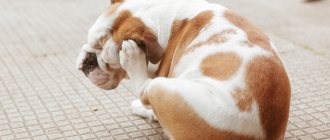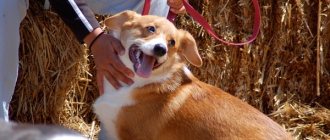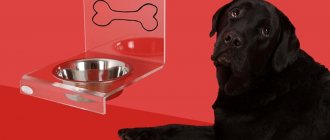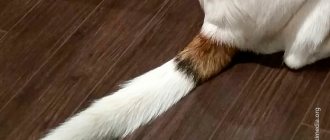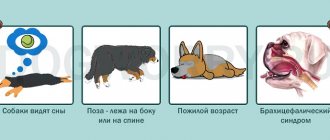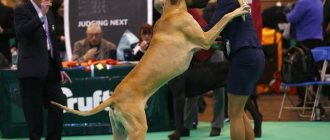0
Source:
The sight of someone sleeping with their eyes open can even frighten an impressionable person, because nature intended for the eyelids to be closed during the night's rest. To understand what causes this feature, you need to take into account factors such as age, heredity, and individual characteristics. One of the common factors that provoke this condition is lagophthalmos, an ophthalmological condition expressed by the inability to completely close the eyelids. Some ophthalmologists agree that this is a normal phenomenon for children. Babies perceive reality more sharply, brightly and colorfully, therefore, due to psycho-emotional overexcitation, they can sleep without completely closing their eyelids. The condition is accompanied by twitching of the limbs and rapid movements of the eyeball. In the case of adults, this condition can be observed with paralysis of the facial nerve, congenital shortness of the eyelids, their cicatricial eversion, orbital tumors, severe forms of Graves' disease and other ailments.
Why does a dog twitch in its sleep?
Movement during sleep is absolutely normal, even for completely healthy dogs with a strong psyche. This is explained simply: the dog also dreams. One can only guess what the four-legged animal is dreaming from by its movements. If it moves its paws, it is probably chasing prey or running away from “enemies.” If she whines, it means she is being offended. Well, if it starts to slurp, it means that it has found something tasty.
In a dream, a dog can:
- lying on your side, move your paws;
- rotate the pupils with closed eyelids;
- move your ears;
- wag the tail;
- make different sounds: whine, bark, growl.
Dogs dream too
However, some movements during sleep may indicate illness in your pet. Therefore, you should carefully look at how he sleeps.
Why does a puppy twitch and whine in his sleep?
A dog, like a person, has two phases of sleep - slow and fast phases, and each has its own characteristics. The slow phase takes up most of your sleep. At this time, the metabolic rate decreases and body temperature drops. The REM sleep phase accounts for only 20-25% and is the complete opposite of the slow-wave sleep phase.
The bodies of a puppy and an adult dog are different, so some processes in puppies have their own characteristics.
One of these features is that puppies have a longer rapid phase of sleep, which is characterized by the presence of dreams. And puppies sometimes repeat what they see in their dreams. If they run in their sleep, then they begin to move their paws with their paws, and sometimes move their whole body, and some very impressionable puppies sometimes “whine” or growl. The puppy's eyes appear half-open, although they are covered by the third eyelid.
The nervous system of puppies takes a very long time to develop, and such dreams, which also make up about 90% of the puppy’s total sleep time, are very important at this age. Scientists have proven that puppies dream while still in the womb.
However, not all puppies twitch in their sleep.
Puppies of even the same breed can have different characters, and this does not affect their dreams. Active “in life” ones run or chase in their sleep, while calm puppies see “calm” dreams in which they take measured walks.
You should not be embarrassed by such phenomena in your pets.
Movement while your dog is sleeping is completely normal. They occur in both puppies and adult dogs. This should not cause you any concern, especially since as dogs get older, their sleep activity decreases markedly.
Since sleep is so important for puppies and adult dogs, do not unnecessarily disturb them while they are sleeping. You should especially not wake up the puppy when the REM sleep phase begins and the puppy is completely immersed in his dreams.
A puppy awakened by any sudden external stimulus can react in the most unpredictable way. The puppy may look confused from the unexpected awakening, not fully realizing what is happening, he may well snap and yelp at the one who woke him up.
The puppy's activity during sleep cannot pose any danger to its health. Moreover, scientists have proven that such dreaming plays a significant role in the development of puppies.
As an owner, you should provide your puppy with a comfortable sleeping place and allow him to enjoy his sleep in peace and quiet.
Source
When should you not worry?
If your puppy twitches in his sleep, this is completely normal! It is also normal that the baby’s eyes are not completely closed; look closely - the mucous membrane is protected by a transparent film of the third eyelid. It will be interesting for you to watch how the awakened puppy tries to do what he saw in the dream. However, most often, owners notice the opposite situation, like the baby running around in his sleep. The dog lies on its side, its paws twitch, the baby may whine or even yelp. Some puppies bark so loudly that they wake themselves up.
When a puppy is active during sleep, he is in the REM phase. If the dog did not wake up and was not awakened ahead of time, after awakening, the ward will not remember the dream. If the baby wakes himself up, he can jump up and continue doing what he did in the dream - this is the norm. The younger the puppy, the longer the REM sleep phase. In babies 2–4 months old, dreaming can occupy up to 90% of the total sleep time.
This is interesting! Experiments have confirmed that puppies see their first dreams even before they are born.
If at night, in a dream
Quite often the owner can hear whining when the animal is sleeping. In a dream, dogs can whine, squeal, and bark. As a rule, at this moment the animal moves its paws, “runs” somewhere, and twitching of the muscles of the body and muzzle is observed. This behavior is most often caused by dreams.
Scientists believe that our four-legged friends in their dreams experience emotional states that they experienced in real life. Therefore, in dreams, dogs often chase game, hunt, or, conversely, run away from a stronger enemy.
A dog may whine even if it is bored and lonely on its bed. In this case, the owner needs to spend more time with the pet before bed, caress it, and calm it down. If an animal experiences anxiety or psychological discomfort from not seeing its beloved owner in sight, you should consider moving the bed closer to the owner’s sleeping place. Seeing a human friend, the dog will calm down and will not whine.
Dog dreams: myth or reality
Scientists answer this question unequivocally: dogs also dream. They began to seriously study this topic back in the middle of the last century, and now this issue has been studied as thoroughly as existing technology allows. It has been proven that, like humans, animals go through several stages of sleep: from light to deep. The latter is characterized by dreams.
A small area of the brain responsible for paralyzing muscles during sleep prevents both people and animals from “participating” in them in full force. It works differently for everyone: someone can sleep absolutely motionless, someone will definitely move. In dogs it is not so well developed, so the vast majority of animals move during sleep.
A dog goes through several stages of sleep: from light to deep.
The first experiments proving the presence of dreams in animals were carried out in the 50s of the last century, and now they would be considered inhumane. They removed part of the brain where the so-called “blue spot” was located.
By the way! The first animal to undergo this operation was a cat.
It is responsible for paralyzing the muscles during sleep. After such an operation, dogs during the deep phase jumped up, ran, played and even began to fight with imaginary enemies.
Interesting! Typically, dogs during such experiments continued to perform their duties during sleep. The hunters pursued the prey or called the owner to it. The guards barked loudly, protecting the territory. The exhibitors stood in a stance allowing one to evaluate their exterior.
Similar experiments are being carried out now, but without surgical intervention. Special medications allow you to temporarily “turn off” part of the brain. After participating in the experiments, the animals return to normal life.
Video - Why does a dog twitch and whine and sometimes bark in its sleep?
Do dogs dream?
Many owners are interested in the question, do our four-legged friends see dreams? Many literary sources on dog breeding give an affirmative answer - dogs are tormented by nightmares, and the dreams of puppies are brighter and more real. Babies can wake up abruptly, showing anxiety, whining, shaking, trying to hide in a secluded place. Often, little ones go to their owner, cuddle up to their feet, ask to be held in their arms, in search of protection.
Around dog dreams, or rather their presence or absence, controversy in scientific circles has not subsided for a long time. Scientists have repeatedly questioned the fact that these animals can dream. In the middle of the last century, it was suggested that the dog shudders during sleep not at all because of dreams, but nervous reactions are to blame.
Research was carried out using equipment, and the hypothesis was confirmed. After such a statement, the issue of dog sleep attracted even more attention, and it began to be actively studied. A decade later, articles and reflections on this topic increasingly appeared in various publications.
Simultaneously with veterinary medicine, the study of sleep mechanisms in human medicine was actively underway, and quite soon a real breakthrough came in this area. Already in the 60s, the whole world learned about REM (rapid eye movement) - the phase of human sleep, during which the sleeper could dream. During this period, the eyeballs of humans and animals move, which is associated with “viewing” dreams.
Causes of tearing
The secretion of tears plays a huge role in a dog's life. Tear fluid cleanses the eye of foreign objects and protects against the penetration of pathogenic microflora. But increased production of tears cannot be considered as a normal condition for a dog. It appears for the following reasons:
- Deformation of the lacrimal canal. Often appears as a result of a head injury, a congenital disorder of the canal, or as a result of infection. Blocked tear ducts also lead to frequent release of tears, which may have a yellow-green tint, and the whites of the eyes become red.
- Eye cleansing. An increase in the amount of tear secretions occurs because the eye independently tries to get rid of the external irritant. If your pet’s tears flow in a stream, but are clean, without impurities, this is a sign of an allergy.
- Accumulation of pus. If tears from your pet's eyes are accompanied by a green, sometimes yellow, tint, there is a possibility that the animal has an infectious disease. In this situation, you should not treat your pet yourself; it is better to immediately seek help from a veterinarian and establish the exact cause of the sore eyes.
How do dogs' dreams differ from human dreams?
With the advent of technology that allows one to monitor brain activity during sleep, experiments on dogs were continued. With their help, it was possible to prove that dog dreams are different from human dreams. They are brighter, more dynamic, and quickly replace each other. Thus, the deep sleep phase in a person can last about one and a half hours. During this time, he manages to view the whole story. In dogs, it takes on average 20-25 minutes, and the dream consists of 2-3 pictures that quickly replace each other.
Interesting! In small breeds of dogs, sleep phases alternate more often than in adults. So, in a toy terrier this can happen every 10 minutes, in a Great Dane - every hour.
Scientists are also inclined to believe that during sleep, animals can not only see and hear, but also smell. This is evidenced by the fact that they often twitch their nose in their sleep, as if sniffing at something.
In small breeds of dogs, sleep phases alternate more often than in adults
Why does a dog twitch and whine in his sleep?
Scientists who have studied the structure and function of the brain of dogs have determined that these pets see much more vivid and dynamic dreams than humans. Intense electrical voltage occurs in certain parts of the animal's brain. His changes explain that the dog is having dreams that cause him to behave restlessly without waking up.
A dog's sleep differs from a human's not only in brightness, but also in duration. People most often dream of long dreams, similar to full-length films. What a dog dreams about most often consists of several pictures replacing each other. So she saw a rabbit, rushed after it and grabbed it with her teeth; this is again followed by a phase of light sleep, which, in turn, will again be replaced by deep sleep. During the night, the animal goes through several such cycles.
It is during the deep sleep phase that your pet's nervous system recovers and rests. A dog awakened at this moment looks completely disoriented and confused; it may even growl at its owner without immediately recognizing him. Try not to wake her up unnecessarily, as adequate sleep time is very important for the animal's health.
Sources:
https://www.rostki.info/index.php/poleznye-sovety/124-shchenok-vo-sne-djorgaetsya-pochemu.html https://kot-pes.com/pochemu-sobaka-vo-sne-dergaet -lapami/ https://www.kakprosto.ru/kak-851709-pochemu-sobaka-dergaetsya-vo-sne
When there is no reason to worry
If your small pet twitches and whines during the day or night, then there is no need to worry. It is also normal if a sleeping puppy's eyes do not close completely. In this case, you can examine the mucous membrane and understand that it is protected by a transparent film - this is the third eyelid.
If you watch a baby who has just woken up, you will notice how he tries to repeat what he saw in his dream. But even more often, the owners see a picture when a sleeping pet sharply moves its paws in its sleep, trying to escape. Usually the dog lies on its side, its legs begin to twitch, sometimes this process is accompanied by whining and even yelping. Some babies bark so loudly that they themselves wake up from their yapping, while being perplexed.
If your dog is active during sleep, it means he has entered the REM phase. When a dog wakes up on its own and was not woken up earlier, it will not remember what it saw in its dream. And if the dog was awakened by his own barking, he may jump up and continue what he was doing in the dream, and this is quite normal.
The younger the pet, the longer this phase is; in babies 8-16 weeks old, this period takes 9/10 of the total sleep time. Thanks to an experimental study, it turned out that dog babies experience their first dreams while still in the womb.
What do animals dream about?
So far no one has been able to “spy” on the dreams of animals. However, scientists have reason to believe that they are more diverse than we might imagine. Definitely, often a dream is a reflection of what has been experienced. Therefore, the central part of the plot is usually the owner, who is the center of the universe for the dog. Often dogs in which the “blue spot” was neutralized, in the active phase of sleep, did everything the same as during the day: played, followed commands, ran.
However, studies have shown that it is during sleep that ancient instincts manifest themselves in animals. Thus, even trained dogs, whose ancestors served humans for many generations, can begin to howl like wolves during the deep phase. And under the influence of drugs, they completely demonstrated original behavior: even decorative dogs could “go hunting” and demonstrate behavior characteristic of their ancestors in the pack.
During sleep, ancient instincts appear in an animal
How to avoid missing warning signs
For first-time owners, the natural twitching of a pet during sleep can be frightening, as it resembles convulsions. If in doubt, you can immediately wake up the sleepy four-legged one. A healthy dog quickly comes to its senses, but if it turns out to be a convulsive attack, then it is impossible to help without medications.
Has the dog's condition worsened? After waking up, is he lethargic, weak, has difficulty raising his head, does not get up on his paws, or does it slowly, straining a lot? You cannot hesitate; you should take your pet to the veterinary clinic as quickly as possible.
Severe weakness occurs in an animal after suffering convulsions, which could stop when the owner calls him sharply or tries to wake him up. If your dog starts to get up or run around while sleeping, you should think about whether he is in a stressful situation.
Weak twitching of the limbs during sleep is normal, but intense, jerking movements of the paws can signal serious dysfunction of the central nervous system.
Any owner should evaluate the condition of their four-legged friend daily and spend a little time examining it after walking. Even a 10-minute procedure will reveal the following signs of the disease:
- apathetic state - the dog is lethargic, looks away, does not respond to the call to walk or play;
- aggressive behavior - the dog bares its teeth, growls or even bites when the owner calls the pet for contact or tries to pet it;
- deterioration of appetite - food remains in the bowl, especially if this has not happened before, or refuses it altogether;
- the dog drinks a lot for no apparent reason or, conversely, refuses to drink;
- a noticeable increase (hot, dry nose) or decrease (cool extremities) in body temperature;
- deterioration in the quality of the coat - the hair becomes disheveled, loses its silkiness and shine (this is often associated with a violation of metabolic processes in the body);
- acceleration (tachycardia) or deceleration (bradycardia) of the pulse when the dog is at rest;
- change in the color of the mucous membranes in the oral cavity - it becomes whitish, blue or yellowish, which means you should measure the temperature and if the reading is low, you should urgently call a doctor;
- partial or complete loss of coordination is a sign of dysfunction of the central nervous system;
- intense trembling, which turns into convulsions in a sleeping dog - in a bitch carrying offspring, hypoglycemic syndrome may thus manifest itself. And after childbirth, this is a sign of postpartum preeclampsia.
Jerking during sleep, turning into convulsions, can occur if the pet has experienced severe stress - after moving, traveling, traveling in transport, being in a crowd of people, getting lost on the street... When the dog finds itself in a safe environment, the response of the central nervous system may be a spasm.
The following conditions can dramatically affect a dog’s physiology and sleep:
- intoxication - the main symptoms are vomiting, diarrhea, lack of appetite, lethargy, excessive salivation, and when the poisoning progresses - convulsions;
- heatstroke - the pet looks tired, exhausted, in this case it is recommended to measure the temperature - if the dog is not helped, intoxication processes occur in the body and convulsions occur;
- hypothermia - a frozen dog will not have seizures if it is healthy, but in a sick, weakened animal the condition may worsen significantly;
- dehydration – a convulsive attack accompanies only severe dehydration;
- diseases caused by viral pathogens.
In addition, many pathological processes - acute and chronic - can lead to the dog twitching during sleep. The owner should be more attentive to the condition of his four-legged friend. And if there are no alarming signs, you can simply smile when your pet “runs” or “talks” in its sleep.
Do dogs have nightmares?
Fears are often reflected in dreams, including those of dogs. It is not difficult to understand that a dog is seeing a “bad” dream. In this case, the pet will whine, tuck its tail, desperately pound its paws and demonstrate anxiety in all sorts of other ways.
If such cases are isolated, you may not attach much importance to this. However, after severe stress, nightmares may recur. This is a signal to the owner that the animal feels insecure, and can subsequently result in health problems.
You can calm the animal by following simple rules:
- praise him more often, stroke him, talk, play;
- increase the time for an evening walk, but do not start active games and running around;
- Give mild sedatives to dogs.
Fears are often reflected in dog dreams
The dog whines in his sleep
Hello, Yana!
Dogs are like people. The dog whines in his sleep - perhaps he is having some kind of dream. Another possible reason is health problems: the pet is in pain. It is especially important to check the animal's gastrointestinal tract. An old dog can also whine and howl in its sleep.
What to do if your dog whines in his sleep?
- Go up and wake up the dog. Wake her up very carefully so as not to startle her from sleep. Call out to her.
- Calm and caress the animal.
- You can “shush”, as when rocking a child.
- Show your pet to the veterinarian. Perhaps there are some health problems.
- Because of old age, an animal may have pain in its bones or something else. Then you need to give painkillers. But it is necessary for a doctor to make a diagnosis. He must prescribe the medicine and dosage so that the medications do not harm the family pet.
How to prevent a dog from whining?
- Do not play outdoor games with your pet before bedtime.
- Fun with new friends, active walks can excite the dog, and in his sleep he will whine and howl.
- Walk your dog in the evening at a leisurely pace.
- Walk long enough so that your pet gets the exercise he needs and is well, but not excessively, tired.
- For evening walks, choose well-known places. Do not take your pet to unusual or unfamiliar areas.
- Do not scold the dog, do not shout at it.
- Feed the animal before bed.
- Ventilate your apartment. Try to avoid any odors in the evening and at night that could disturb your dog.
- Some dog owners find relief by giving their pets a little warm milk before bed.
- If the animal does not get enough sleep, this can also be the cause of restless sleep, whining and howling. An adult pet sleeps from 12 to 16 hours a day. Puppies sleep up to 20 hours a day. Large dogs sleep longer - up to 18 hours. Sleep time is individual for each dog. But sudden changes in habits require monitoring and, possibly, consultation with a doctor.
If your dog hasn't whined before
Perhaps your dog has never whined or howled at night before, waking up household members and even neighbors. Then this may be due to the physical or emotional state of the animal:
- The pet has health problems.
- The animal was stressed. This could be a move, a long journey, or a meeting with an aggressive relative.
- Unfavorable atmosphere in the family where the dog lives.
Think, perhaps the dog was scared? Dogs are like children. Even as adults, large animals, they can become upset, scared or nervous. You might have been too busy lately and haven't been paying attention to your pet. Not enough walks or infrequent petting makes the dog anxious. Quarrels in the family also negatively affect the pet’s nervous system.
A pregnant dog may also whine both while awake and while sleeping. Reasons: fear and stress, malaise and fatigue, as well as hormonal changes in the body for childbirth. During this period, your pet requires special attention. Provide her with decent medical control, proper and sufficient care. Don't yell at a whining dog. Set up a birthing area. Prepare for childbirth. You will need patience, as well as knowledge, medicine and some equipment.
It is important to understand what is causing the behavior change. Only correctly identifying the cause will help you cope with your dog’s whining.
Best regards, Galina.
Blushed
The cause of redness in one or both eyes can be a fairly common disease - conjunctivitis.
In the catarrhal form, the membrane of the eye is red and swollen. There is lacrimation. The discharge is serious.
This form begins acutely, and after transition to the chronic phase it is very difficult to treat.
In the purulent form of conjunctivitis, the discharge is first liquid, and then yellowish and thick. The eye becomes red and swollen.
With the follicular form, follicles can be seen on the surface of the eyelid. They look like raspberries. Often this form has a chronic course with remissions and periodic exacerbations.
When the first signs of conjunctivitis appear - watery eyes, you should regularly wipe your eyes with a cotton swab dipped in boiled water. Any physical activity is excluded and communication with other animals is limited, since the disease is contagious.
If symptoms do not go away and only get worse, you should immediately consult a doctor. Anti-inflammatory drugs and antibiotic-based ointments are most often prescribed.
The cause of redness may also be overheating of the animal. It can occur if the Spitz has been in a room with too high a temperature for a long time. If your dog overheats, he or she may experience shortness of breath, fever, and vomiting. The animal must be taken out into fresh air.
The eyes may become red due to a head injury. This is accompanied by lacrimation and closing. When the owner tries to pet the animal, aggression occurs. A Spitz can get injured in a fight with a cat. Her scratches are dangerous because there are a large number of microbes under the claws.
If the animal has severe lacrimation, redness, and the whites are filled with blood, these are signs of a burn to the pet’s eye. The dog becomes restless and tries to scratch its face. The eyelids do not open in this condition.
If you do not notice the Spitz's contact with chemicals, then the burn can be confused with conjunctivitis. The diagnosis can only be made by a veterinarian by examining the cornea.
A change in the color of the sclera can occur as a result of drying out of the mucous membrane or the ingress of dust.
Physiological reasons
Trembling in a dog due to physiological reasons has one main advantage and difference - it disappears immediately as soon as the irritating factor ceases its effect.
The main physiological reasons why a dog trembles are:
- Emotional overload and stressful conditions . It especially manifests itself during severe fright. Some owners note that their dog is afraid of thunderstorms. Small breeds of dogs are more likely to experience stress and begin to shake after traveling in public transport or during a visit to the veterinarian.
- Hypothermia of the body . Physiological muscle tremors occur at low temperatures outside while walking. It is more common in dogs with short hair. A sharp change in air and nervous shock are observed in dogs after a haircut, characterized by slight trembling throughout the body. As soon as the animal gets used to it and warms up, the tremor goes away on its own.
- Intense fear . A dog can become frightened by a sharp sound or a stronger opponent. When a dog experiences a feeling of fear, it begins to breathe rapidly and tremble.
- Positive emotions and the excitement that arose against them . Some breeds of small dogs are more impulsive than their large relatives. Breeds such as the Yorkshire Terrier or Chihuahua may tremble from an overabundance of positive feelings. The reason that a small dog trembles at home without experiencing stress may be the anticipation of a favorite treat or a meeting with a beloved owner after a long absence.
- Changes in hormonal levels. A sharp release of hormonal substances into the bloodstream provokes the appearance of tremors in dogs during the period of sexual heat. This phenomenon is observed mainly in males who smell a female who is in a state of heat and ready to mate. The male trembles and whines, especially if he is on a leash and cannot get closer to the desired object.
- Attracting the owner's attention . Some dogs, trying to show their devotion and love for their owner, begin to tremble all over when meeting the owner. This condition is more often diagnosed in dog breeds that have their tails docked. Thus, the animal compensates for the lack of a tail, which can wag, showing its genuine joy from the meeting.
- Trembling during sleep . The appearance of tremors of the limbs and other parts of the body is observed mainly in puppies and young dogs. This is due to an excess of emotions and dreams. Sometimes an adult dog trembles in his sleep, after active physical activity and walks in the fresh air.
- Coming out of anesthesia . Abdominal surgery is always performed under general anesthesia. Serious narcotic drugs are used to induce deep medicated sleep. After anesthesia, dogs experience trembling in the limbs, as well as a number of other symptoms - decreased body temperature, nausea, apathy and lethargy. For the first few hours after the operation, such conditions should not disturb the owner. If the tremors do not go away and your pet’s condition worsens, you must consult a veterinarian.
If the dog is trembling for no apparent reason, and its condition is complicated by an increase in body temperature, nasal discharge, diarrhea, vomiting, depression, an urgent call to the doctor’s home or a visit to the veterinary clinic is necessary.
Should you wake your dog during deep sleep?
Waking up in the stage of light sleep, the dog does not remember what it dreamed. However, if you wake her up during the deep stage, she will not immediately wake up from sleep. Most likely, in this case, you will look around for several seconds, as if not understanding where you are.
However, such an awakening can also be dangerous. A dog that “chased” enemies in a dream may growl, snap, or even bite its owner. This does not indicate hidden aggression, but only proves that in a dream, pets remember their instincts.
If nervous twitching and whining bother the owner, you can wake up the dog. However, you should not touch it. It's much safer to call her by name.
A dog twitches in its sleep: a nightmare or a seizure?
The first thing to note is that a seizure can occur not only during sleep, but also during wakefulness, when the animal is standing; At the same time, it absolutely does not understand what is happening to it, it is as if in an unconscious state.
The dog lies and sleeps. At the same time, her eyes can be either closed or half-open. The animal looks calm and relaxed. During a seizure, the eyes are usually wide open, the gaze is “meaningless”, empty.
How not to lose sight of the disease?
You need to be able to distinguish cramps from natural twitching during sleep. When in doubt, wake up the dog. A pet who feels well will quickly regain consciousness; you will not be able to influence the seizures without medication. Do you notice that your pet feels unwell after waking up, drops its head, cannot swallow saliva completely, or has difficulty getting to its feet? Contact your doctor and don't delay. Severe weakness indicates a previous seizure, which may have stopped when you suddenly spoke loudly to the dog or pushed it to the side in an attempt to wake it up.
Important! If your dog gets up or jumps up and runs in his sleep, you need to analyze the level of stress that the pet is experiencing. Small twitches are normal, but strong paw kicks indicate a disturbance in the central nervous system.
Make sure to properly assess your pet's condition every day. After an evening walk, spend 5–10 minutes with your pet. A quick examination will reveal symptoms indicating that your dog is unwell:
- Apathy - the dog is lethargic, does not look into the eyes, does not react to the toy.
- Aggression - the pet is ready to bite if only it is left alone.
- Poor appetite is not always an alarming symptom.
- Refusal to drink water is a very alarming symptom.
- If the dog is too hot or cold to the touch, measure its temperature.
- Dry, rough skin indicates dehydration.
- Tousled fur that has lost its shine indicates a metabolic disorder, that is, the body has gathered strength to fight something, leaving the fur without proper nutrition.
- Tachycardia or bradycardia (pulse too fast or slow) is a very alarming symptom if the dog is at rest.
- Whitish, blue or yellowed mucous membranes of the mouth - measure the temperature; if it is low, call a doctor. Jaundice indicates serious liver problems.
- Ataxia (loss of balance, lack of coordination) - indicates problems with the central nervous system.
Important! Severe trembling that turns into a seizure during sleep in a pregnant dog may indicate an attack of hypoglycemia. If the seizure occurs after childbirth, postpartum preeclampsia is possible.
Cramps may be caused by a specific condition rather than a disease. For example, having experienced severe stress, travel, or getting lost, a four-legged animal can become nervous without immediately visible consequences. After entering a safe environment, the dog’s central nervous system may respond with a non-standard reaction - a spasm. Dangerous conditions that “occur” in one day include:
- Poisoning – accompanied by vomiting, diarrhea (sometimes with blood), refusal to eat, lethargy, drooling, and in the final stage, convulsions.
- Heatstroke - visually the dog's condition can be assessed as tired, but suspicions can be confirmed by measuring the temperature. Without assistance, blood intoxication increases and convulsions begin.
- Hypothermia - simply being frozen, the dog will not go into a convulsive seizure, but if the pet is already sick with something and is frozen, a sharp deterioration in the condition is likely.
- Dehydration – cramps occur only with severe dehydration, which is difficult to miss. Severe dehydration is always preceded by one or more symptoms: vomiting, diarrhea, refusal to drink.
- A viral disease that progresses rapidly, such as influenza.
Dreams of puppies
Research has also shown that dogs have their first dreams while still in the womb. Therefore, it is not surprising that newborns can squeak and move in their sleep.
Dogs begin to have their first dreams while still in the womb
Puppy dreams last longer than in adult dogs. The active phase can take up to 90% of their sleep time. In addition, the children’s nervous system has not strengthened, so they may react more violently to dreams. They often begin to bark and whine, thereby waking themselves up.
In cases of such an “emergency” awakening, they may behave inappropriately for a few seconds: look around, not understanding where they are, continue whining, or even jump up sharply and run.
Interesting! Puppies can sleep with their eyes open. In this case, the pupils are covered with a thin film - the third eyelid.
This behavior worsens when moving to a new home. This is a lot of stress for the puppy, so the owner will have to show maximum understanding and patience while waiting for the puppy to adapt. Once this happens, his sleep will become more restful.
Why does a dog whine in his sleep?
Usually puppies and teenagers whine in their sleep. They whine, twitch their paws, lick themselves - this is normal and coincides with the so-called rem phase, when dreams begin. In children it lasts longer than in adults, since the nervous system is still imperfect. Scientists discovered that dogs dream back in the 60s, and in the 80s it became known that in their sleep they can experience events that have already happened and have nightmares.
Owners of adult dogs complain somewhat less frequently about disturbing sleep. Often these are pets with an easily excitable nervous system. But there’s nothing wrong with them “talking” in their sleep.
Diseases accompanied by tears
Eye pathologies in dogs can cause the animal to go blind or remain with an injured eye for life, so if eye problems appear, treatment must be started immediately.
Excessive tear production often occurs with the following diseases:
- Conjunctivitis. It can appear as an allergy to new dog food, certain foods, chemicals, eye injuries, etc. The disease is accompanied by infrequent discharge from the eyes that is yellow, green or brown. The pet's whites are red, the dog begins to squint heavily and blink frequently.
- Inflamed Gardner's gland. The purpose of the third eyelid is to protect the animal’s cornea from the penetration of external irritants. If inflammation appears in the third eyelid, it turns red, swells, and purulent accumulations appear around it.
- Injuries. By nature, dogs are curious animals, so they stick their snout everywhere. In most cases, it is the dog’s muzzle that suffers, for example, from attacks by a cat, wire and other unsafe objects. Herbs of this nature usually lead to the development of inflammation.
Useful video
To learn what an owner should do if a dog whines and barks for no reason, watch this video:
Similar articles
- Urolithiasis in dogs: causes, symptoms...
Common urolithiasis in dogs: why it appears, how to rid your shaggy friend of the pathology. ... The dog is worried and whines. Read more - Why can a dog have a heart attack?
Why did my dog have pus from his nose? How the dog behaves after a fracture, the actions of the owner. ... The dog whines, squeals, worries. Read more
- Seizures in a dog: causes, tonic seizures,...
Why did my dog have pus from his nose? ... The dog whines, tries to hide in a dark corner, avoids communication. Read more
- A broken paw in a dog: how to determine the front...
Why did my dog have pus from his nose? ... The dog whines, squeals, and can even bite the owner when a painful shock develops. Read more
- The dog was electrocuted: what to do, consequences
How to behave if your dog is electrocuted. Why did my dog have pus from his nose? ... The animal jumps away from the current source with a squeal, tucks its tail, and whines. Read more
Signs of illness
As a rule, the behavior of pets is not limited to squinting their eyes. The dog may also move away from the hands of the owners when they want to pet or scratch the pet, and in some cases even rush and show unreasonable aggression towards the owner. The animal may rub against any objects in the house in every possible way in an attempt to eliminate unpleasant sensations, and also avoid bright and harsh lighting.
In addition, your pet may suffer from uncontrollable watery eyes or red eyes. The affected organ may become swollen or slightly swollen. In some cases, dogs with this disease refuse solid food because they have problems opening their mouths and chewing due to pain spreading throughout their face. If at least one of these signs is present, the pet's eyes should be examined more carefully for the presence of corneal opacity, pupil asymmetry, and the appearance of a third eyelid. Like any disease, it can be accompanied by weakness, fatigue of the animal and loss of appetite.
Treatment of dog eye diseases
Prescribing a drug to an animal on your own is extremely dangerous not only for its health, but also for its life. Especially when it comes to suspected serious diseases, including the above-mentioned anaphylaxis, enteritis, and even more so, an insect or snake bite. Nevertheless, it is within the power of the owner to provide high-quality first aid to his pet:
- Monitor the condition of the skin around the eye. For this purpose, be sure to wipe away accumulations or even suppuration that have formed as a result of the disease. To do this, you can lightly wet a cotton swab with hydrogen peroxide, but make sure that the substance does not get on the cornea itself, as this will increase the pain;
- After cleansing the skin, apply a cold compress. This will temporarily allow the dog to escape from the tormenting pain. It is worth noting that this method works great for mild conjunctivitis, as it effectively relieves irritation after just a few uses. The desired frequency of using this method is from three to six times a day;
- in case of allergic reactions, use Diphenhydramine. It is important to know that this method should be practiced only if the dog has a local allergic reaction. When treating more serious diseases, Diphenhydramine may be not only useless, but also harmful. If you are confident in the correct choice of product, apply it only after first cleansing the area under the eyes.
To make an accurate diagnosis and provide the necessary assistance, contact your veterinarian
Important! To prevent the skin around the eye from drying out and, accordingly, itching, it is recommended to additionally treat this area with tetracycline ointment.
If behavior changes for no reason
If there is no apparent cause for concern, the owner should carefully observe the dog. If the squealing is short-term and does not recur, there is no reason to worry.
If the unreasonable whining continues, despite measures taken to calm it down, then the pet should be shown to a veterinarian. Often, only a clinical examination, additional diagnostics in the form of blood and urine tests, ultrasound or x-ray diagnostics will help determine the cause of the animal’s inappropriate behavior.
We recommend reading about urolithiasis in dogs. You will learn about the causes of stone formation in dogs, symptoms and diagnosis, surgical and conservative treatment, diet.
And here is more information about cystitis in dogs.
Pets often communicate with humans through voice. Whining and squealing, dogs not only ask to go outside, beg for a tasty morsel, but also show other psycho-emotional feelings - joy, fear, uncertainty, submission, etc. The reason your dog is whining and squealing may be a health problem. It is important for the owner to be able to recognize what information his four-legged friend wants to convey.
The meaning of things
Different animals see objects around them differently. A dog who looks around the room does not at all consider himself surrounded by a person’s things - all these are objects of his world. Our ideas about what this or that object is intended for may or may not coincide with a dog’s. The meaning of things is determined by what we do with them (von Uexküll called this “functional tone”). A dog may be indifferent to chairs, but if you teach him to jump on them, the chair becomes something to sit on. Subsequently, the dog may independently discover that there are other things intended for sitting: a couch, a pile of pillows, or, for example, a person’s lap.
So, we begin to understand in what ways the ideas about the world of dogs and humans are similar and in what ways they are different. For dogs, many objects in the surrounding world are associated with food - much more than for people. Moreover, they distinguish “functional tones” that do not exist for us - for example, things that can be tastefully rolled on. If we are not children and are not inclined to such games, then the number of such objects tends to zero for us. And on the contrary, a huge number of things that have a strictly defined meaning for us (forks, knives, hammers, pushpins, fans, watches, etc.) have no (or almost no) meaning for dogs.
So, there is no hammer for a dog. It means nothing to her, at least until it is associated with another, meaningful object (for example, the owner uses it; the cute dog who lives down the street urinated on it; it has a wooden handle that can be chewed on).
When the umwelts of a dog and a person collide, then, as a rule, people do not understand what their pets are doing. For example, a person quite seriously states that his dog knows that he has nothing to do on the bed. A person can even buy a special dog bed and order the dog to go lie down there. Usually the dog obeys. The person feels satisfied. Still, another step towards mutual understanding has been taken.
But is it? Many times, returning home, I found a crumpled, still warm bed and realized that either my dog had just been lying there, joyfully greeting me on the threshold, or some unknown invisible alien. We easily formulate: a bed is intended for a person, a dog bed is for a dog. A human bed is a place to rest and may contain expensive linens and a variety of pillows. It wouldn’t even occur to us to sit on a dog bed that cost us (comparatively) little and is strewn with chewed up toys.
What about the dog? She doesn't see much difference between her bed and ours, but ours is much more attractive. After all, a bed smells like a person, and a dog bed smells like something that the master happened to have at hand. The bed is where we spend some time; Sometimes there are crumbs scattered and clothes lying around. Of course, the dog will prefer our bed to his bed! She doesn't know why we perceive this place differently. Of course, a dog can remember that a human bed is something special if he is regularly scolded for lying on it. But then he will understand not the difference between his bed and our bed, but rather the difference between the places where he can and cannot lie unhindered.
In the dog world, a bed does not have a “functional tone.” Dogs sleep where they can, and not where we would like them to. For relaxation, they choose places where they can lie down comfortably, where it is not hot or cold, there are relatives and it is safe. Almost any flat surface in the house meets these requirements. Design a corner to suit your dog's tastes, and your pet will likely find it just as desirable as a bed.
Features of the treatment of conjunctivitis
This disease is quite common among many dog breeds, and even manifests itself in different ways. In this regard, various treatment methods and, accordingly, drugs were invented:
| Type of conjunctivitis | A drug | Image | Treatment methods |
| Catarrhal | Ichthyol and Tetracycline ointment | Tetracycline ointment | Apply to the eye 3 times a day. Preliminary anesthesia with Novocaine |
| Follicular | Albucid and Dexamethasone | Albucid | Eye drops 3 times a day. For each dose, 4 drops should be instilled. |
| Keratoconjunctivitis sicca | Optimmune | Optimmune | The ointment should be applied twice a day after preliminary rinsing with plain water. The course of treatment is quite long - about two weeks |
Factors contributing to eye squinting
All of the above are not all possible causes of squinting:
- Dogs often become “Chinese” in regions with a very dry and hot climate. Squinting in such cases is the body’s natural defense against drying out of the cornea and dust, which can be abundant in dry air.
- This can often be observed in spring and summer, when there is a lot of pollen and fluff in the air. Not all dogs cause an allergic reaction, but getting them into the eyes irritates the cornea and causes constant squinting.
- An extremely dangerous cause of “shrinking” eyes can be... heart disease. More precisely, pathologies accompanied by the development of cardiac edema.
The dog's eyes are swollen: possible causes
Conjunctivitis is commonly called swelling of the eye due to a foreign object. In some cases, this may be the result of an infectious disease. It is recommended to think about the need for treatment already at the stage of redness and itching.
In general, eye swelling can occur in the following cases:
- ingress of particles of grass, leaves, small objects. This problem is especially common in puppies;
- dust ingress. Even if your dog is quite active and in practice is not susceptible to many diseases, it is advisable to avoid his prolonged stay in dusty rooms;
- ingress of chemical reagents. This is a serious enough reason that a visit to the veterinarian is really necessary;
- bite from poisonous snakes or spiders. This reason is most likely in mid-summer. Often, a dog’s eye can also swell due to a bee, bumblebee or other insect bite;
- disease of internal organs. An inflamed eye may indicate a fairly serious illness affecting the kidneys, liver or heart. In this case, it is important to monitor the diet and overall activity of the puppy or adult dog.
A dog may squint its eye due to a speck of debris in it.
The very first sign of conjunctivitis is visible tear tracks on the dog's face. If treatment begins at this stage, it is possible to avoid many consequences, including ectropion of the eyelids. Due to the fact that the inner part of the eyelid begins to come into contact with the external environment, suppuration and, accordingly, intense pain in the dog are inevitable.
